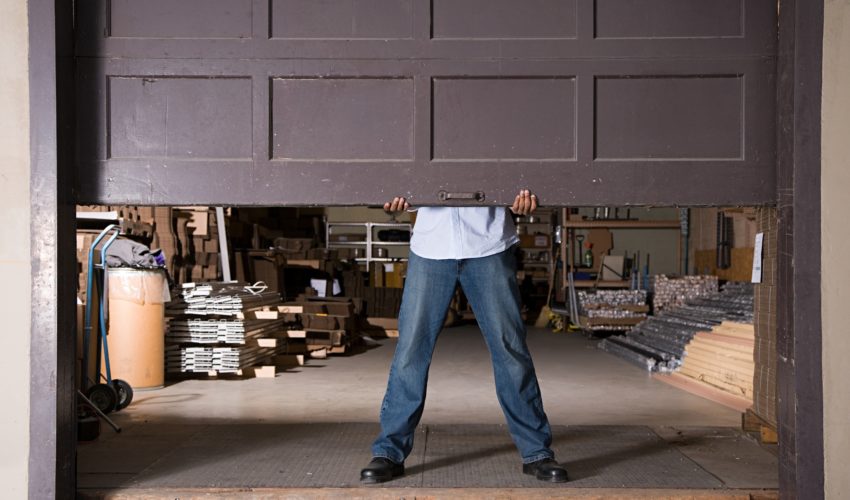The average garage door opens and closes between three and five times every day. That’s about 110 times per month and almost 1,500 times per year. Most times, you’ll press a button or voice activate your garage door, raising it or lowering it as required.
However, if we’ve learned anything over the past few years, it’s that natural disasters can cause widespread damage including power outages. Power outages will prevent your voice activation or your remote control from working and they will leave your garage door stuck in whatever position it was in when the power failed. This can lead to problems, especially if your vehicle is inside the garage and effectively out-of-service.
You are not wholly dependent on the power grid when it comes to your garage door, though, because it comes with a failsafe system for just such an emergency. If you find yourself with a frozen door, there’s a simple process to unfreeze it.
1. Be Safe
If the garage door is suspended at any height above the ground, it is very risky to switch from the electric to a manual opening system. Immediately, the mechanism that had been supporting the weight will be disengaged, leaving nothing holding the weight. This will cause it to slam to the ground, likely causing damage. Worse, if somebody were trying to handle the door while it was being disengaged, the weight of the door could come down upon them with force, causing injury. We recommend you call a professional if it’s stuck off of the ground, for safety’s sake.
2. Pull the Emergency Release Cord
The key to getting your door unstuck is to separate the trolley from the carriage so that you can move the door manually. Until you do this, the motor is still the only way that it will budge. The garage door trolley is connected to the door and moves it as it opens and closes. You’ll see it moving above your head. When the garage door is open, the trolley will be toward the center of the garage; when it is closed, it will be located closer to the door.
Attached to the trolley is a red handle hanging from a length of rope or chain. This is the emergency release cord and when you pull it, it disconnects the trolley from the carriage, transforming the system from electric to manual. Only now will you be able to lift the garage door fairly easily depending on the weight of the door, and without resistance.
3. Check for Locks
Garage doors often come with manual locks. These could look like three or four-inch pieces of metal on either side of the door that, when pushed in, prevent the door from moving. They blend into the tracks because they are both the same color and they’re easier to see when pulled out and thus disengaged. If the door still isn’t moving, check to see if the manual locks are engaged.
As far as opening the garage door manually, it’s truly not as hard as you think. If you’ve disconnected the parts and checked for locks, it should open right up for you. If not, give us a call at Bayside Garage Doors at (813) 433-7395 and we’ll offer you garage repairs and service to get that door open and you on your way.

